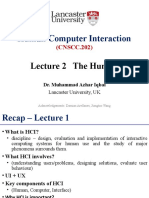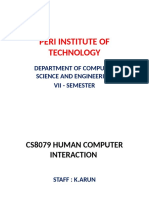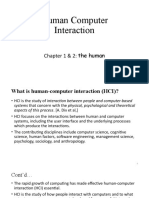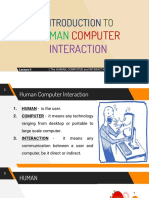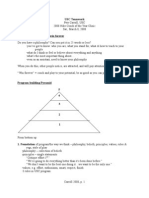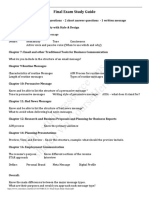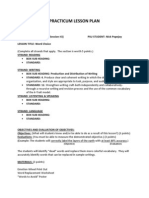0% found this document useful (0 votes)
41 views12 pagesAssignment Unit-I Answers
The document provides a comprehensive overview of Human-Computer Interaction (HCI), detailing its definition, components, principles, and goals. It emphasizes the importance of user-centered design, input-output channels, and understanding human memory in creating effective interfaces. Additionally, it highlights HCI as a multidisciplinary field that integrates various domains to enhance user experience with technology.
Uploaded by
syediliyas8282Copyright
© © All Rights Reserved
We take content rights seriously. If you suspect this is your content, claim it here.
Available Formats
Download as PDF, TXT or read online on Scribd
0% found this document useful (0 votes)
41 views12 pagesAssignment Unit-I Answers
The document provides a comprehensive overview of Human-Computer Interaction (HCI), detailing its definition, components, principles, and goals. It emphasizes the importance of user-centered design, input-output channels, and understanding human memory in creating effective interfaces. Additionally, it highlights HCI as a multidisciplinary field that integrates various domains to enhance user experience with technology.
Uploaded by
syediliyas8282Copyright
© © All Rights Reserved
We take content rights seriously. If you suspect this is your content, claim it here.
Available Formats
Download as PDF, TXT or read online on Scribd
/ 12








